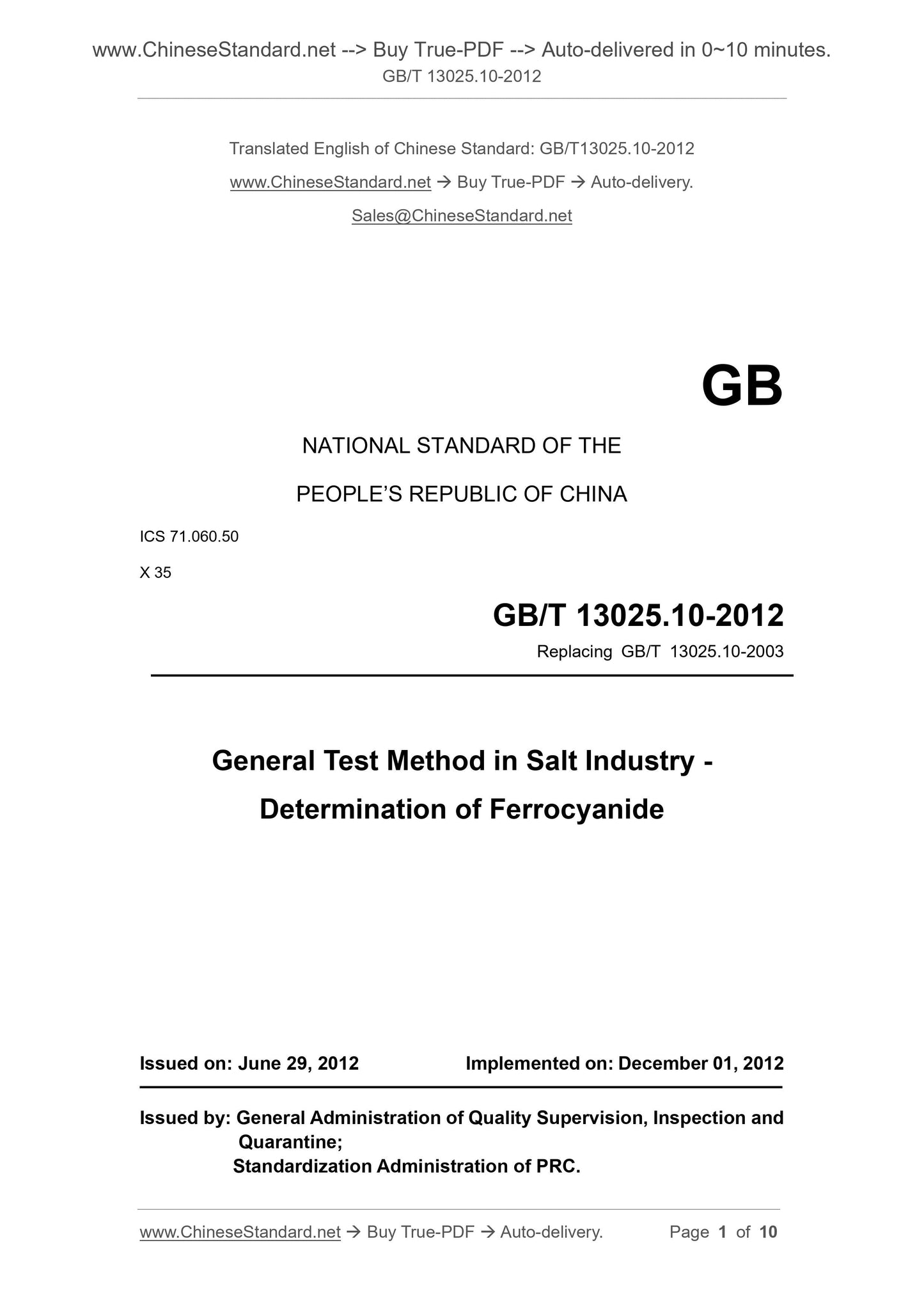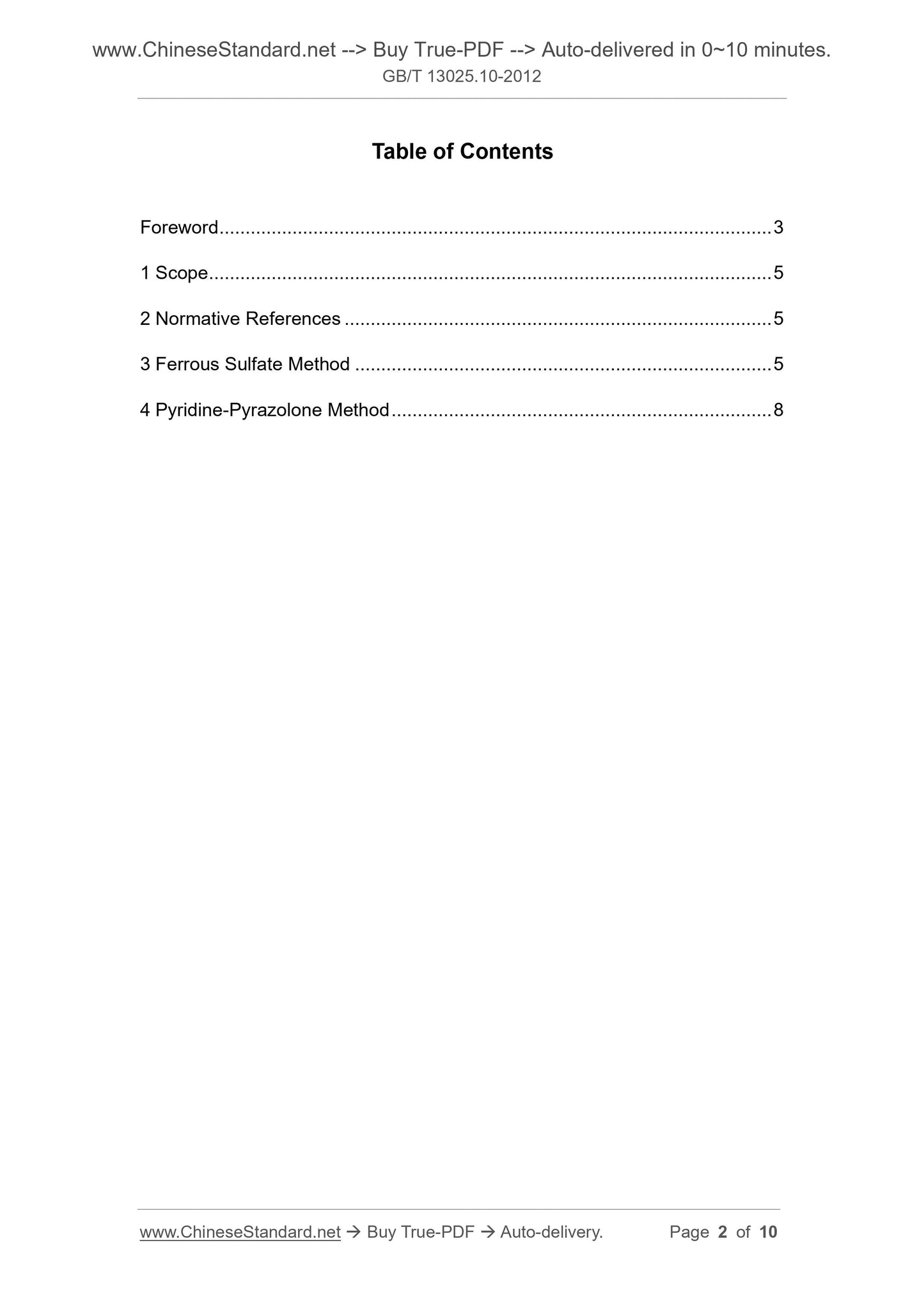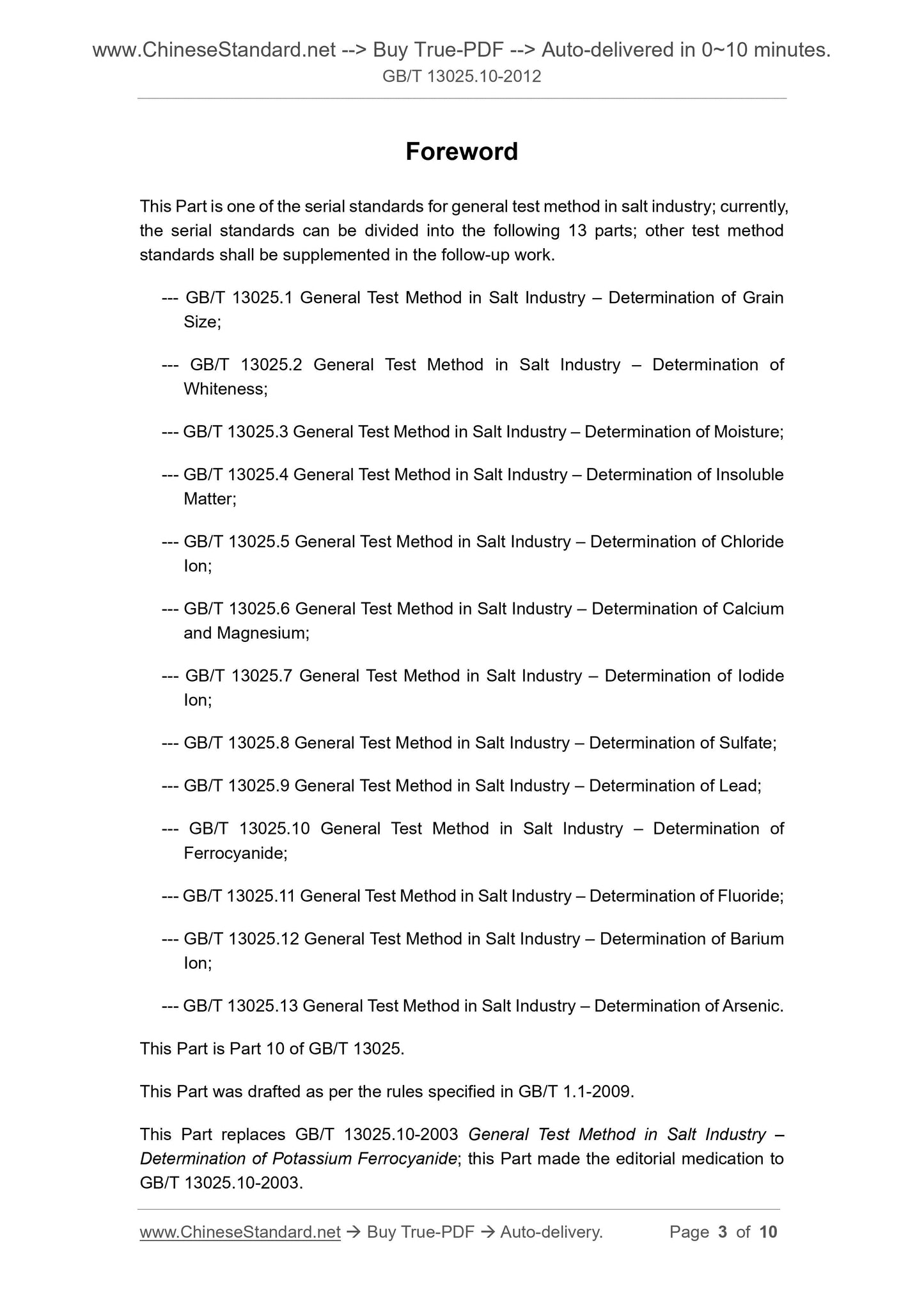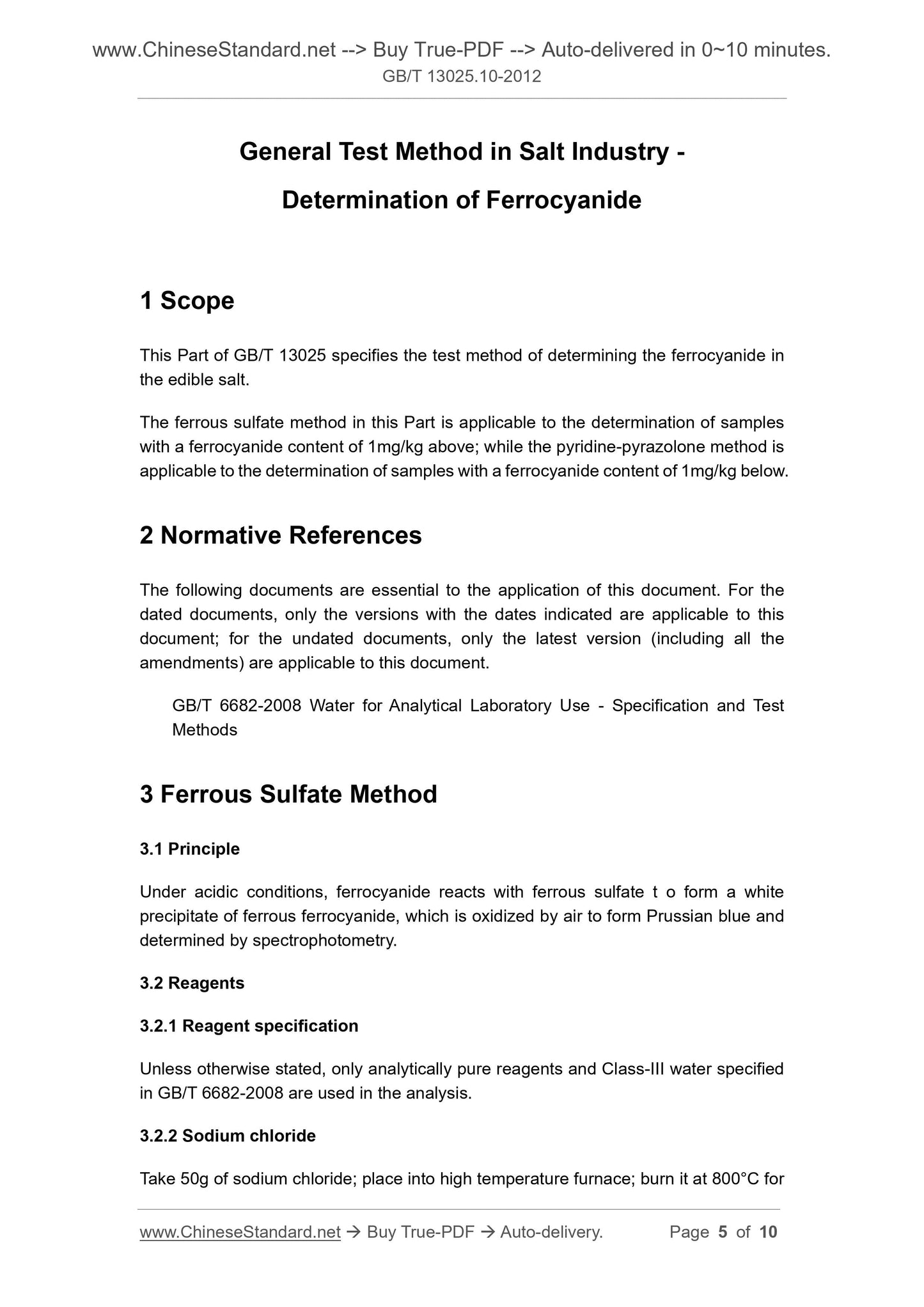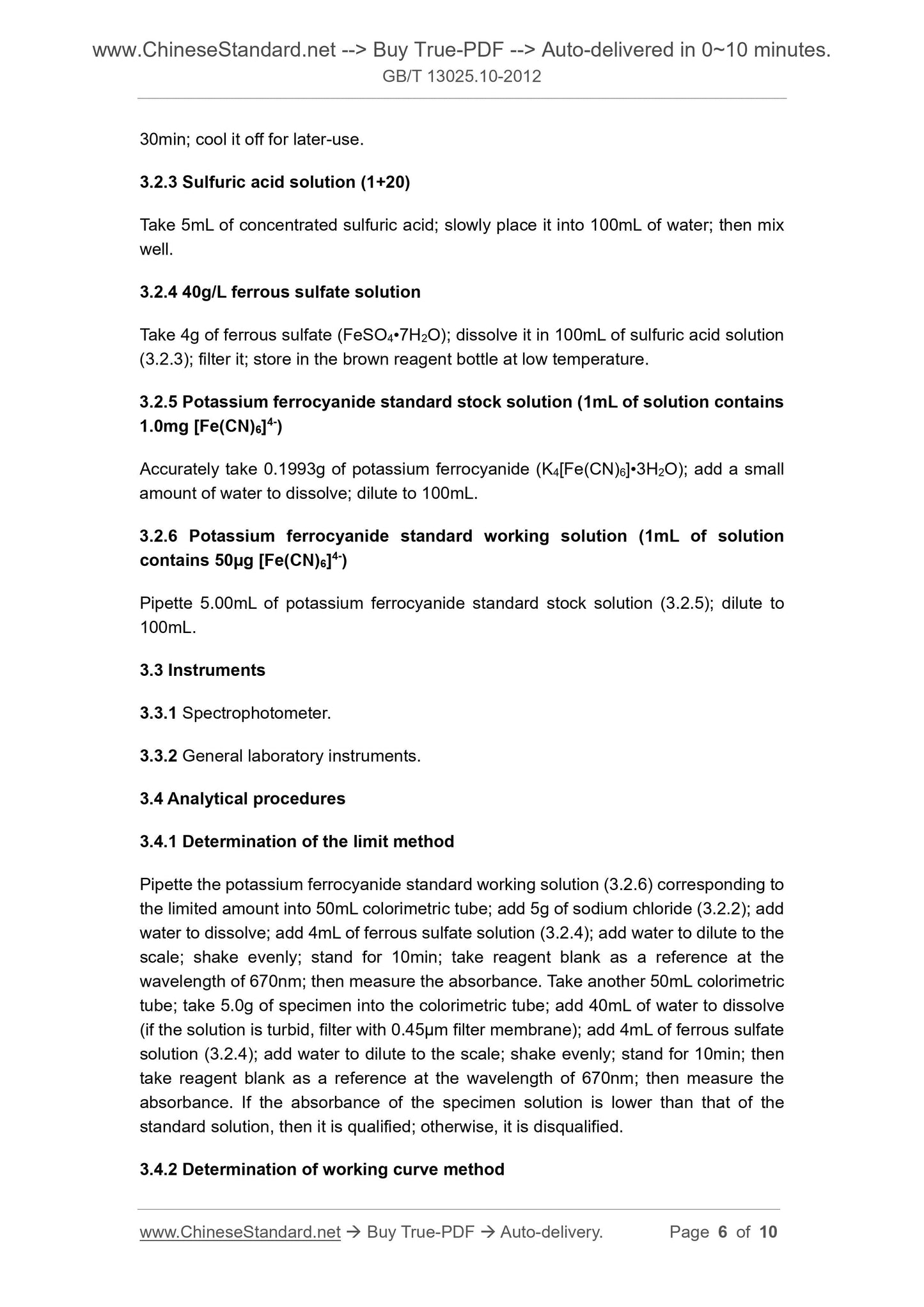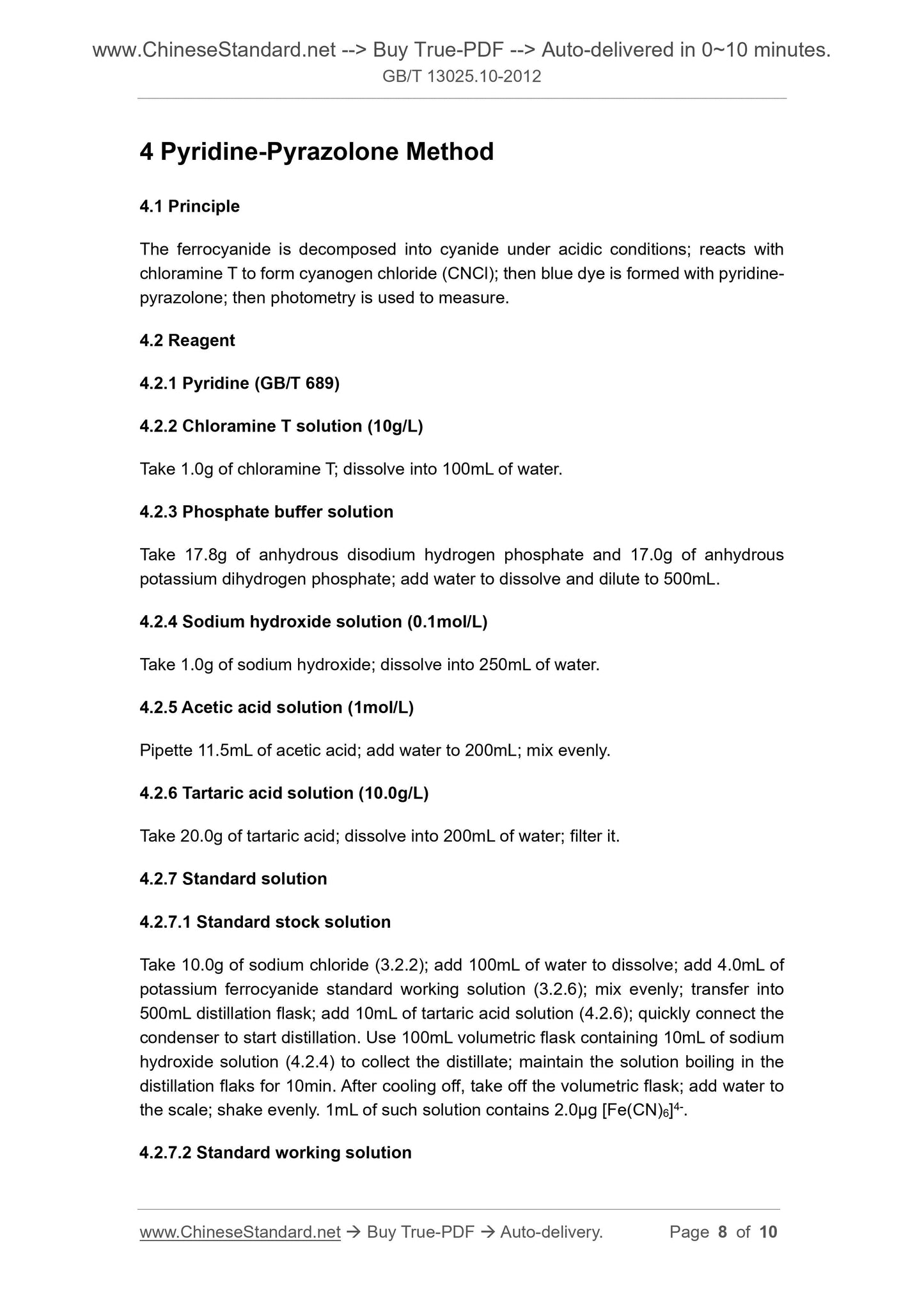1
/
of
6
www.ChineseStandard.us -- Field Test Asia Pte. Ltd.
GB/T 13025.10-2012 English PDF (GB/T13025.10-2012)
GB/T 13025.10-2012 English PDF (GB/T13025.10-2012)
Regular price
$110.00
Regular price
Sale price
$110.00
Unit price
/
per
Shipping calculated at checkout.
Couldn't load pickup availability
GB/T 13025.10-2012: General Test Method in Salt Industry - Determination of Ferrocyanide
Delivery: 9 seconds. Download (and Email) true-PDF + Invoice.Get Quotation: Click GB/T 13025.10-2012 (Self-service in 1-minute)
Newer / historical versions: GB/T 13025.10-2012
Preview True-PDF
Scope
This Part of GB/T 13025 specifies the test method of determining the ferrocyanide inthe edible salt.
The ferrous sulfate method in this Part is applicable to the determination of samples
with a ferrocyanide content of 1mg/kg above; while the pyridine-pyrazolone method is
applicable to the determination of samples with a ferrocyanide content of 1mg/kg below.
Basic Data
| Standard ID | GB/T 13025.10-2012 (GB/T13025.10-2012) |
| Description (Translated English) | General Test Method in Salt Industry - Determination of Ferrocyanide |
| Sector / Industry | National Standard (Recommended) |
| Classification of Chinese Standard | X35 |
| Classification of International Standard | 71.060.50 |
| Word Count Estimation | 7,752 |
| Older Standard (superseded by this standard) | GB/T 13025.10-2003 |
| Quoted Standard | GB/T 6682-2008 |
| Regulation (derived from) | National Standards Bulletin 2012 No. 13 |
| Issuing agency(ies) | General Administration of Quality Supervision, Inspection and Quarantine of the People's Republic of China, Standardization Administration of the People's Republic of China |
| Summary | This standard specifies the ferrous cyanide salt in the test method. The law applies to the part of ferrous sulfate ferrous cyanide content of 1 mg/kg or more sample measured, pyridine pyrazolone law applies to ferrous cyanide content of 1 mg/kg the follo |
Share
